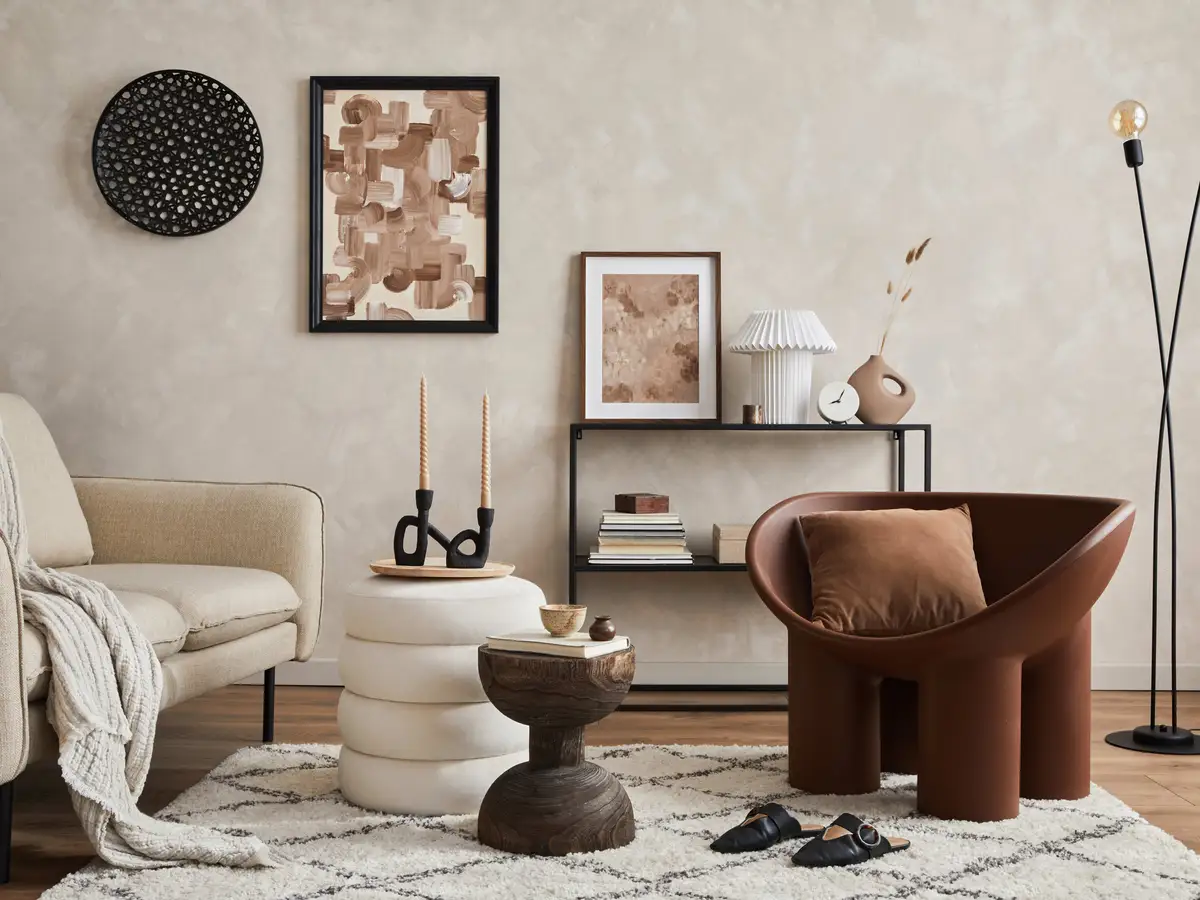If you’ve ever found yourself gazing at a shelf or table and wondering how to style it, you’re not alone. Striking the perfect home decor balance is difficult; however, here’s the secret many designers swear by: the 3-5-7 rule. It’s a neat, simple system that can allow you to create stylish, harmonious arrangements in a room. So let’s get right in and see how it works!
So, what’s the 3-5-7 rule?
At its most basic, the 3-5-7 rule is an interior design guideline for displaying items in groups of odd numbers. Before, you would cluster items in even numbers (which may look too patterned and still), but now you use odd numbers—3, 5, or 7 pieces. This helps maintain a sense of balance while also keeping things visually interesting.
Here’s a breakdown:
3-piece set — Good for smaller spaces or smaller spots, such as coffee tables or shelves. That might be three things of different sizes, like a vase, a candle, and a small sculpture.
5 pieces: Best for medium spaces, such as mantels, console tables, or bigger shelves. Here you can combine various objects, such as books, a plant, a picture frame, and a decorative object.
7 pieces: Great for big arrangements, such as on a bookcase or gallery wall. More separates give you the opportunity to create another outfit. Envision a grouping of objects in different heights, textures, and materials.
Why Does the 3-5-7 Rule Work?
Odd numbers attract the eye and provide more visual interest. The 3s, 5s, or 7s are floating so much more comfortably; it just feels more natural, more dynamic, and more balanced. It offers the ideal amount of open space and organization, so your decor doesn’t feel too cramped or sparse. Essentially, it just works.
How to Implement the 3-5-7 Rule in Your Home
On Coffee Tables
When styling your coffee table, for example, consider a trio of pieces — a stack of small books, a candle, and a plant. This gives an eye-catching yet harmonious appearance without being overbearing on the table.
On Bookshelves
Place bookshelves using the 3-5-7 rule to give multiple dimensions of interest. Example: Five objects on a shelf: some books, a decorative bowl, and a picture frame. This variety avoids the space becoming too cluttered but remains stylish.
On Mantels
On a mantel, for example, you might style five pieces, in which a pair of tall vases are placed on either side of the fireplace and a few smaller pieces in the middle, possibly the vases and smaller objects, like a clock, photo frame, or decorative object. The challenge is balancing the heights and shapes for a cohesive composition.
On Dining Tables
When styling a dining table centerpiece, the 3-5-7 decorating rule applies beautifully. Consider three elements in an arrangement: a tall vase in the center with two smaller items on the sides. If it’s a bigger table, do five things, different shapes and sizes, to keep the breadth of the look.
Applying the 3-5-7 Rule Successfully: Our Tips
The 3-5-7 Rule: Arrange Objects In Different Heights This enhances visual interest and helps the space feel dynamic.
Use Textures: Mix together items of different textures — ceramic, wood, and metal, for example — for depth and freshness.
Stay in proportion: if it’s a really tiny space, don’t throw seven items in there. Try starting off with three, and if you think the space can take tips, build from there.
The 3-5-7 rule is a simple but powerful decorating trick that can take any room in your home to the next level. Group decor in odd-numbered configurations to establish balance and harmony while keeping the look visually interesting. Whether furnishing a coffee table, bookshelf, or mantel, this rule can give your look the stylish, edited feel of being there in no time.
So, as you style a space next, give the 3-5-7 rule a whirl — and see how it changes the way your room feels! Happy decorating!




